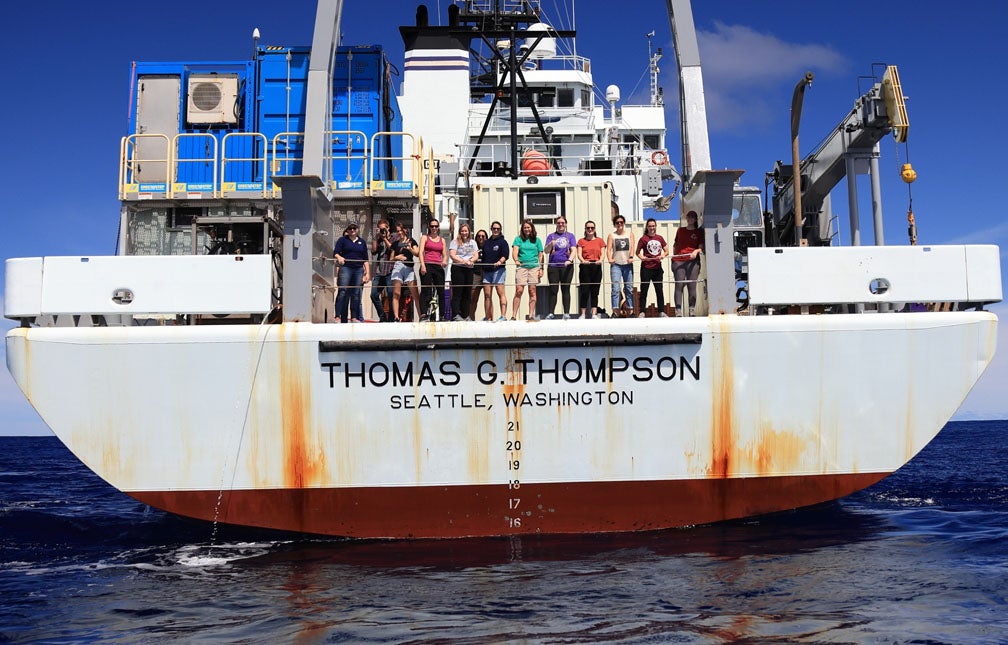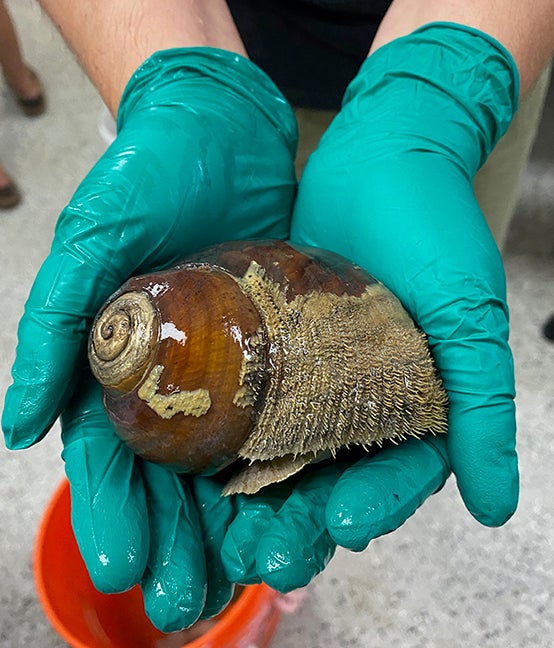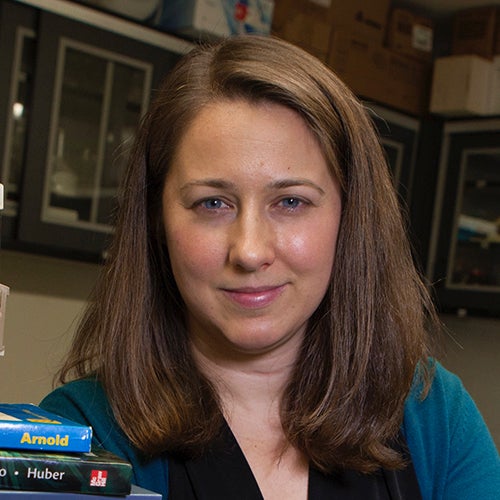KINGSTON, R.I. – October 26, 2022 — The National Science Foundation has awarded nearly $1.3 million to University of Rhode Island Graduate School of Oceanography Assistant Professor Roxanne Beinart to continue her work in researching deep-sea animals and their bacterial symbionts.
“We’re researching how these organisms have adapted to hydrothermal vent ecosystems through their partnership with microbes. This award allows us to use genomics and high-pressure experiments to further investigate adaptation in the microbes that are symbiotic with these deep sea animals,” Beinart said.
Beinart, whose research takes place in the southwestern Pacific Ocean’s Lau Basin (Kingdom of Tonga), was excited when the award came through last summer because it will allow her team to return to the region for two more research cruises over the next five years.

“I’ve never had a project where we’ve had multiple pre-planned cruises. In the past, we might get to go once as part of the project, and then we would have to hope that we get the funding to return. The idea that we get to go, do some work, and then definitely go back a few years later is very exciting.”
The award also stipulates that there must be an education component. In this case, Beinart and her colleagues will create a new, open-source deep-sea biology textbook. Beinart teaches deep-sea biology at URI and says there is no accompanying textbook. “There’s nothing under 20 years old for use in the course that I teach.”

In addition to being able to create a source with updated information, Beinart is happy to be a part of the open-source trend of publishing. “Educational institutions are moving toward the open-source paradigm, which offers greater opportunities for students of more limited means to access textbooks and other educational materials,” she said.
Beinart will be writing portions of the book, along with editing contributions to the new volume from expert deep-sea biologists. The URI’s Inner Space Center will help with the digital design product that the team is making.
“It will be really fun for me, and it will also bring forward the concept of open educational resources.” She says that URI has begun to implement the open-source idea and that there’s been interest on the state level. Beinart said she’d like to become a champion of the idea at URI. “The current method of textbook publishing prevents many people from being able to access the material due to cost factors.”
Beinart’s work examines organisms that share a mutual reliance in order to survive. “There are a number of animals that are abundant at hydrothermal vents that depend on microbial symbionts to provide their complete nutrition, some without actually eating. They’re totally dependent on their bacteria. The larvae of these animals don’t yet have any bacteria and must settle and get their bacteria from the environment in order to survive. A specific type of bacteria, their symbiont, partners with an organism and enables the animal to grow.
“It’s a kind of gamble as an animal, that you’re going to release your larvae into the environment without the microbial partner it needs to survive. But that’s offset by the chance of the larvae settling in a new location and finding a local symbiont strain that is optimally suited for that environment. This idea has long been hypothesized, but in my lab, we’ve been able to show that hydrothermal vent animals partner with local strains of symbionts that appear to be adapted to that specific location. With this project I am following up on that evidence. We’re trying to better understand whether the odds of survival and success are better when they have the chance to partner with a local symbiont.”
Beinart’s research examines the deep-water sea snail Alviniconcha. “If you look at hydrothermal vents all over the world, there are invertebrates that have evolved nutritional symbioses with bacteria. In the eastern Pacific, the predominant organisms are tubeworms, clams, and mussels. In the Atlantic there are a lot of mussels and shrimp, but in the western Pacific it’s snails. I’ve been working with Alviniconcha snails since my doctorate, and they’re one the predominant animals at hydrothermal vents in the western Pacific.”
There’s a sense of urgency in her project, as the area is being targeted for deep-sea mining, and the animals may be vulnerable to those activities. “These animals live in very small ecosystems, and the threat of deep-sea mining would have the real potential to harm these populations. Our work contributes to the basic biology of these threatened species, which will be important for understanding how they survive, how they might populate new locations, and how they might react to being disturbed by human activities.
“We don’t really know how these ecosystems are linked to other ecosystems, so we don’t want to knock out a link in that chain without understanding what that chain is. These hydrothermal environments are a hotspot of activity in the ocean bed. They’re a hotspot of diversity and abundance and biomass at the bottom of the ocean, and we don’t know how these link to other ecosystems. So not only do we run the risk of extreme biodiversity loss, but we also run the risk of disturbing ecosystems that we’re still only beginning to understand.”
This story was written by Hugh Markey

